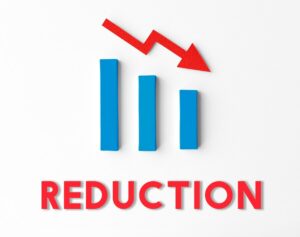Understanding your website’s users’ activity might feel like deciphering a complex and ever-changing puzzle. The bounce rate is one measure that frequently confounds web admins. The tried and true method is to look at bounce rate averages industry to see what is now regarded as the standard. Compare your site’s figures with these benchmarks to gain insights into areas for improvement.
How Does Bounce Rate Work?
Bounce rate is a web analytics statistic that calculates the percentage of visitors that leave a website after just reading one page without engaging with any other pages. In other words, it indicates the proportion of single-page sessions to overall website entries.
A high bounce rate might suggest that visitors are not finding what they were looking for or that the website’s content, style, or user experience could be improved. Lowering bounce rates is a common business objective since it indicates higher engagement and a better user experience.
How to calculate the bounce rate
You can calculate the bounce rate by using the formula:
Bounce Rate = (Total Bounces\Total Entrances)×100
● Total bounces — the number of single-page sessions where the user exited the site without further interaction.
● Total entrances — the total number of sessions on a specific page.
Once you get these two numbers, divide the total number of bounces by the total number of entrances and multiply the result by 100 to get the percentage.
Why You Should Use the Bounce Rate

Website owners and marketers can make data-driven decisions to improve user experience, adjust content strategy, and optimize overall website performance by employing bounce rate as a critical performance indicator.
1. The bounce rate reveals how engaged users are with a website. A high bounce rate may suggest that visitors need help finding the material interesting or engaging, necessitating more study into potential issues.
2. Content relevance evaluation helps in determining the relevance and effectiveness of landing pages. A high bounce rate on specific pages indicates that the content may not match user expectations or needs, necessitating a reassessment of content quality and relevancy.
3. Bounce rate tracking assists in identifying parts of the user experience that require improvement. Web admins can improve website design, navigation, and content by learning why people quit after seeing a single page.
4. The bounce rate is frequently associated with conversion rates. Websites with a reduced bounce rate are more likely to convert visitors into customers or achieve other desired outcomes. Improving the bounce rate can help with conversion rates.
5. Page performance evaluation enables web admins to examine the performance of specific pages. Pages with regularly high bounce rates may require changes to boost user engagement and encourage users to explore other material.
6. The bounce rate can be used to assess the performance of marketing initiatives. A high bounce rate from a campaign can suggest a mismatch between the campaign messaging and the landing page content.
7. Search engines can use bounce rate as a ranking element in their algorithms. A high bounce rate may indicate to search engines that the substance or relevancy of a page is missing, thereby harming its search ranking.
8. Abnormally high bounce rates may signal technical problems such as poor website load times or broken components. Monitoring bounce rate assists in identifying and addressing these issues as soon as possible.
Bounce Rate Averages by Industry
You can compare the average website bounce rate by industry to those of potential, indirect, or direct competitors:
| Industry | Bounce rate |
| Travel | 82.58% |
| B2B | 65.17% |
| Lifestyle | 64.26% |
| Business and finance |
63.51% |
| Healthcare | 59.50% |
| E-commerce | 54.54% |
| Insurance | 45.96% |
| Real estate | 40.78% |
Undoubtedly, the website bounce rate varies by industry more than twice as much. According to this data, email bounce rates are concerning for all businesses. The causes of such frightening symptoms might vary and are not always within your control.
Overall Strategies to Improve the Bounce Rate
Strategic approaches can considerably improve a website’s attractiveness and encourage users to explore its offers further.
Optimize load speed
Faster-loading pages are essential for creating a consistent user experience and lowering bounce rates. Strategic optimization, such as picture refining, browser caching, and script minimization, adds to faster and more pleasurable navigation.
Create compelling content
The creation of high-quality, captivating content is the foundation of user engagement. This entails not just meeting but surpassing user expectations. Straightforward titles, well-structured content parts, and multimedia components all contribute to creating an immersive and attractive atmosphere.
Improve website navigation
The ease of navigation is critical to keeping users attention. Streamlining website navigation promotes a user-friendly and straightforward experience. Users can smoothly browse new pages thanks to a structured menu layout and precise routes.
Use clear CTAs
Clear and appealing calls-to-action are used to efficiently guide customers through their online experience. Well-crafted CTAs allow meaningful user involvement, whether they encourage additional research, subscriptions, or purchases.
Enhance mobile responsiveness
As people visit websites on a variety of devices, optimizing for mobile responsiveness is critical. A responsive design ensures a consistent user experience regardless of device, lowering bounce rates.
Include A/B tests
Using A/B testing to its full potential enables experimenting with various design components. This strategy provides insights into user preferences and reveals the most resonant aspects, from layouts to color palettes to CTAs.
Optimize meta descriptions
Writing captivating meta descriptions is an art that sets the tone for user expectations. By guaranteeing congruence between expectation and content, these descriptions greatly minimize the probability of consumers bouncing.
Improve readability
The readability of material is critical to user retention. A visually appealing and readily consumable reading experience is enhanced by clear typefaces, proper font sizes, and well-considered space between text parts.
Conclusion
These tactics serve as a full toolset for web admins and marketers, providing a path for lowering bounce rates and cultivating a solid and long-lasting digital presence. You can create a healthy balance between user pleasure and engagement by adjusting these methods to individual sectors and continually responding to user behavior.

